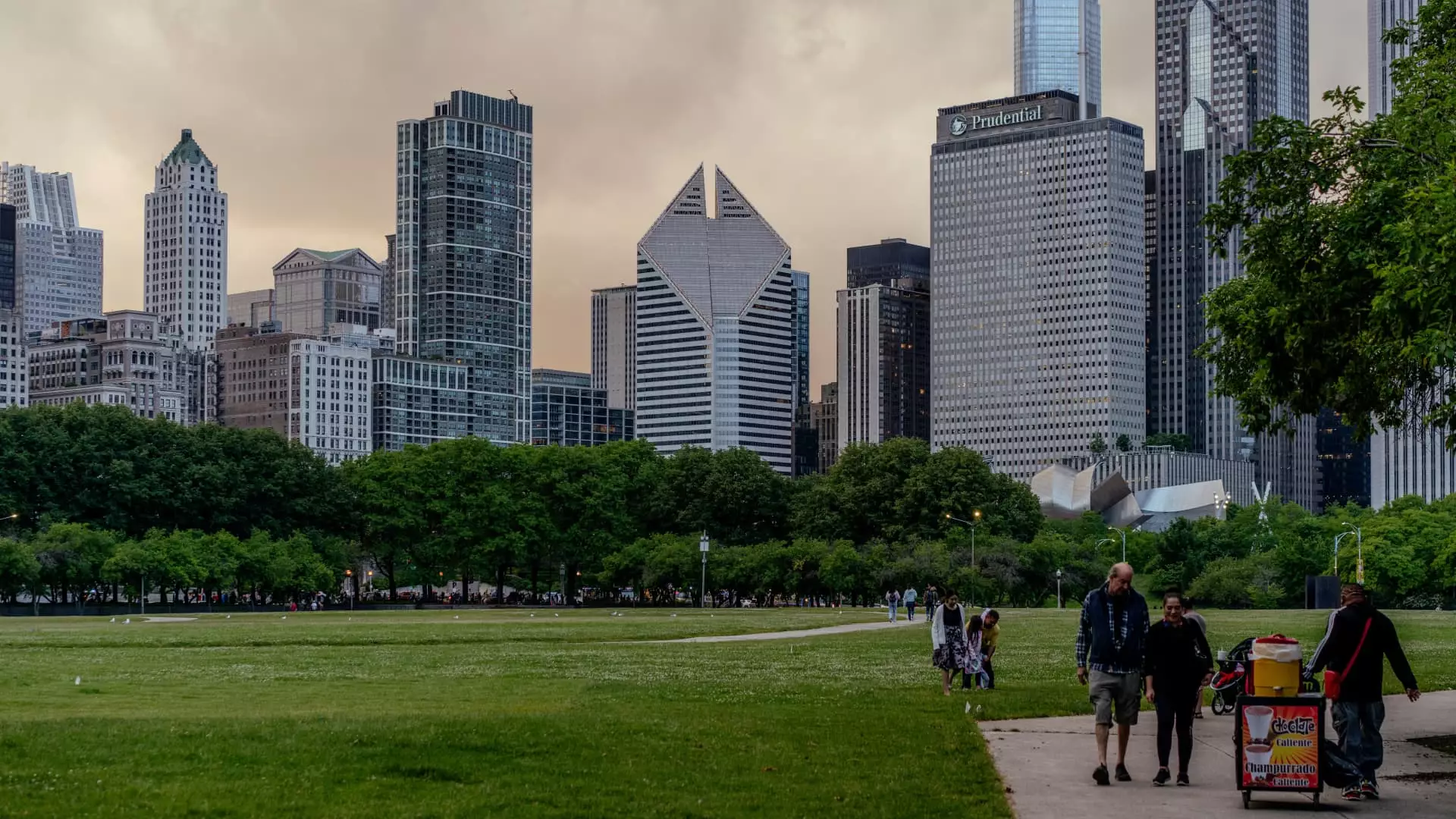The real estate landscape in the United States has been considerably altered over the past year, with rental prices showcasing stark diversity in different metropolitan areas. While many Americans have experienced a cooling in rent inflation since the pandemic peak, specific cities have witnessed exorbitant increases in rental costs—particularly for apartments. This article delves into these contrasting trends, exploring the reasons behind the soaring prices, the implications for renters, and the overall state of the housing market.
According to data from Zumper, certain cities have seen unprecedented rises in apartment rental prices, particularly for one- and two-bedroom units. For instance, Syracuse, New York, experienced a dramatic increase of 29% and 25% in rents since June 2023. Such spikes were not isolated, as other major metropolitan areas like Chicago, New York City, and Lincoln, Nebraska also saw figures rise by over 10%. However, contrasting circumstances are evident in cities like Oakland and Memphis, where rent prices for one-bedroom apartments have declined by at least 5%. This bifurcation in rental trends points towards complex dynamics of supply and demand, which play a fundamental role in shaping the market.
The national average offers a sobering perspective, with rents rising modestly—by about 1.5% for one-bedroom and 2.1% for two-bedroom apartments. Nevertheless, it is crucial to acknowledge that these averages mask the substantial variations across regions, highlighting the divergent experiences of renters nationwide.
New York City stands out as the most expensive urban area for renting an apartment, where typical monthly costs for a one-bedroom unit soar to approximately $4,300. In stark contrast, cities like Akron, Ohio, and Wichita, Kansas, offer an astonishingly lower cost at around $730 per month. This juxtaposition underscores the complexities of the housing market: while some areas witness exorbitant demand leading to lofty prices, others struggle to attract renters, resulting in stagnant or declining rents.
One of the core drivers of escalating rents is the dwindling availability of rental units. For instance, the apartment vacancy rate in New York City recently plummeted to an astonishing low of 1.4%, a figure not recorded since the 1960s. Real estate experts like Crystal Chen reflect on this, attributing the rise in rent prices to neighborhoods experiencing heightened demand amidst constrained inventory.
Soaring rental costs present significant financial challenges, particularly for lower-income households. Data from Zillow indicates that a typical renter would spend nearly 30% of their income on new rental agreements, raising alarms for affordability, particularly when compared to pre-pandemic norms of around 28%. The situation is especially dire in New York City, where approximately 86% of low-income residents face severe rent burdens, leading to increased missed payments and overall financial distress.
This financial strain also extends its ramifications to potential homebuyers, whose ability to save for down payments is constricted by ungodly rent costs, effectively sidelining many from participating in the housing market altogether. This situation offers a glimpse into the interconnected relationship between rental prices and broader economic mobility, which has profound consequences for the country’s housing ecosystem.
The rental landscape underwent a significant transformation post-Covid. Initially, rent inflation plummeted, as remote work prompted many to relocate from urban centers to suburbs. However, as return-to-office mandates emerged and lifestyle preferences shifted back towards urban living, a renewed demand for rental properties surfaced, exacerbating inflation. Annual rent inflation had previously stabilized between 3% and 4% prior to the pandemic and surged to nearly 9% at the beginning of 2023, marking a troubling change in trajectory.
As some cities face escalating costs, others promote balance through decreasing rents stemming from rising apartment supplies. Moving forward, the trajectory of U.S. rental markets remains uncertain, shaped by local economies, demographic shifts, and evolving housing policies.
The unfolding narrative in the rental markets across major U.S. cities reveals a tapestry of experiences defined by stark contrasts. While some regions grapple with surging costs spurred by limited availability, others provide a reprieve with declining rents. The implications are vast for renters at all income levels, stressing the pressing need for enhanced housing policy measures and greater accessibility to affordable housing. As we move forward, understanding these dynamics will be crucial for both renters and policymakers in navigating the intricacies of the evolving rental landscape.

